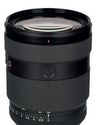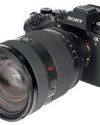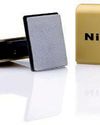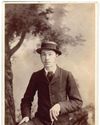
You wait ages for one, and then three come along at once. The past year has been a bonanza for Sony full-frame mirrorless users who appreciate lenses with a ‘perfectly normal’ focal length close to 43mm. Those in the known value this range for the way it imparts a particularly natural-looking perspective to your images. At the end of 2018 we saw the sublime but expensive Zeiss Batis 40mm F2 CF, while in July Sigma revealed its tiny 45mm f/2.8 DG DN | C. In between the two appeared this budget alternative: the Samyang AF 45mm F1.8 FE.
With the tagline ‘Tiny but Premium’, the Korean fi rm’s contender is a small, lightweight optic with a very palatable £349 price tag, £200 less than the Sigma and all of £800 cheaper than the Zeiss. Despite this, it gathers more light than either of these rivals. So what, if anything, is the catch?
Features
At first glance you might think the 45mm f/1.8 uses a conventional optical design, with its 7-element, 6-group formula appearing rather less complex than that of most modern lenses (for example, Nikon’s 50mm f/1.8 S employs 12 elements in 9 groups). But in reality this is no simple double-Gauss derivative; instead, Samyang has employed a design optimized for mirrorless, with two aspheric elements, one made from extra-low dispersion (ED) glass, and an unusual convex front element. This is not dissimilar to the Zeiss 40mm F2 CF.
Indeed in most respects, the 45mm f/1.8 is every inch a thoroughly modern lens. It employs an internal-focus design driven by a Linear Activator Step Motor that’s used for both autofocus and electronic manual focus. It's aperture diaphragm sports nine curved blades to produce circular out-of-focus highlights and attractive background blur. One aspect that’s perhaps slightly behind the times is its 45cm minimum focus, as both, it's Sigma and Zeiss rivals can focus 20cm closer.
Esta historia es de la edición November 02, 2019 de Amateur Photographer.
Comience su prueba gratuita de Magzter GOLD de 7 días para acceder a miles de historias premium seleccionadas y a más de 9,000 revistas y periódicos.
Ya eres suscriptor ? Conectar
Esta historia es de la edición November 02, 2019 de Amateur Photographer.
Comience su prueba gratuita de Magzter GOLD de 7 días para acceder a miles de historias premium seleccionadas y a más de 9,000 revistas y periódicos.
Ya eres suscriptor? Conectar

Calling The Shots: A Queer History of Photography
Offering an unprecedented view of photographic history through a queer lens, this is a wonderful and powerful book, says

Large-aperture standard zoom, too
SONY has also revealed a new premium standard zoom, the FE 28-70mm F2 GM.

Super-fast, high-res Sony Alpha Ai II
SONY has announced its new professional full-frame flagship camera, the Alpha A1 II.

39 awesome accessories
Our round-up of the best accessories we've used and reviewed this year, along with some old favourites. There's something here for every budget, starting from just £7, including tripods, bags, filters and much more

Such a thing as society
This autumn sees the launch of a major new book and exhibition devoted to examining the multiplicities of photography during 1980s Britain. Peter Dench finds out more

Join Club
The sociable Canvey Island Photographic Club is keen to grow its in-person meet ups

Capturing flight
Winners and finalists of Bird Photographer of the Year share their tips for success with Hollie Latham Hucker

140 years of change
AP has become the world’s oldest surviving consumer photo magazine because we have moved with the times, says Nigel Atherton

Preserving history in platinum
A deep dive into the meticulous art of platinum printing, and the collaboration between the Royal Geographical Society and Salto Ulbeek. Mike Crawford explores how they brought historical photographs to life with enduring beauty and precision

Life in the past lane
What was life like for an amateur photographer in 1884? John Wade takes a trip back in time